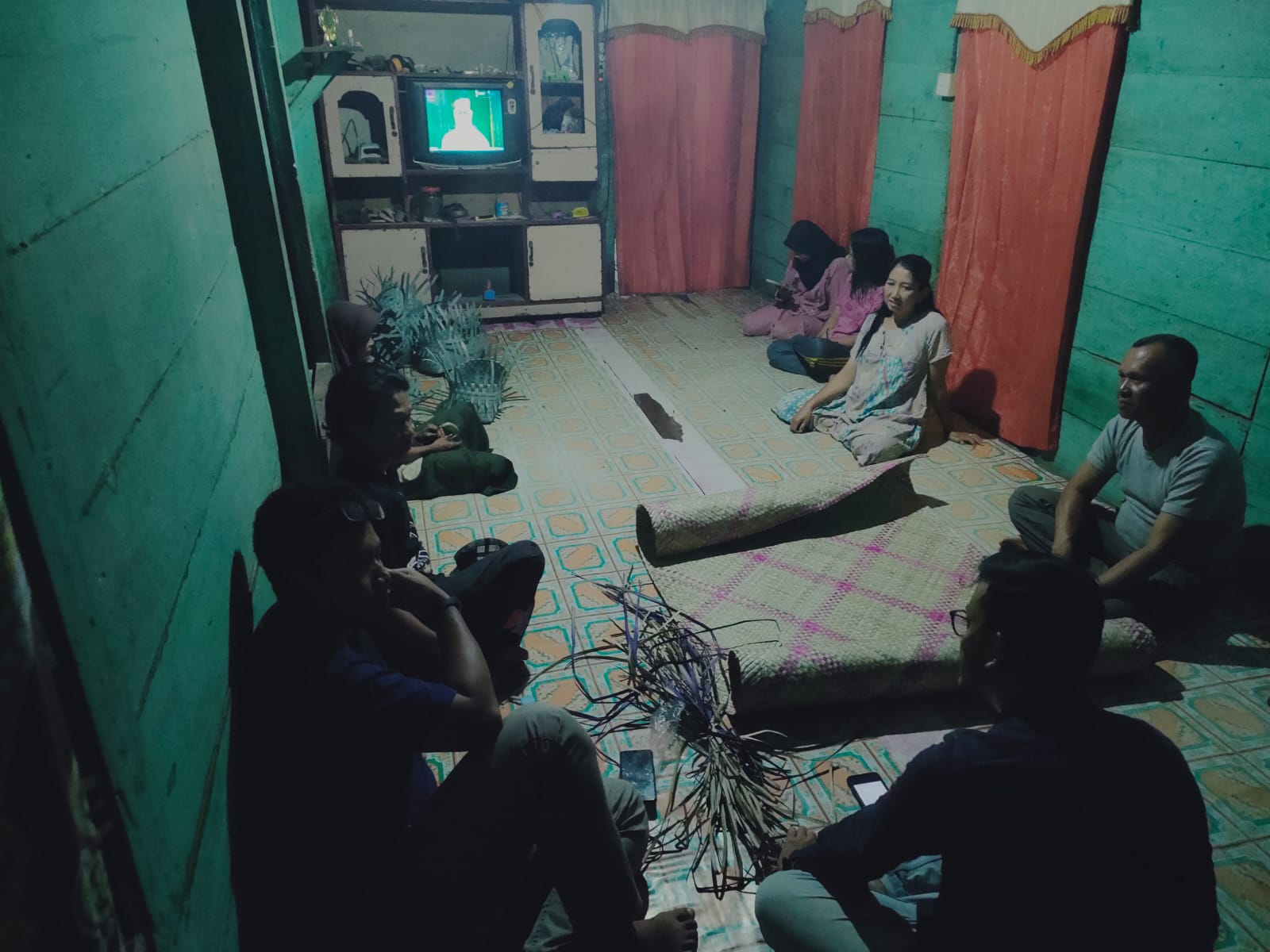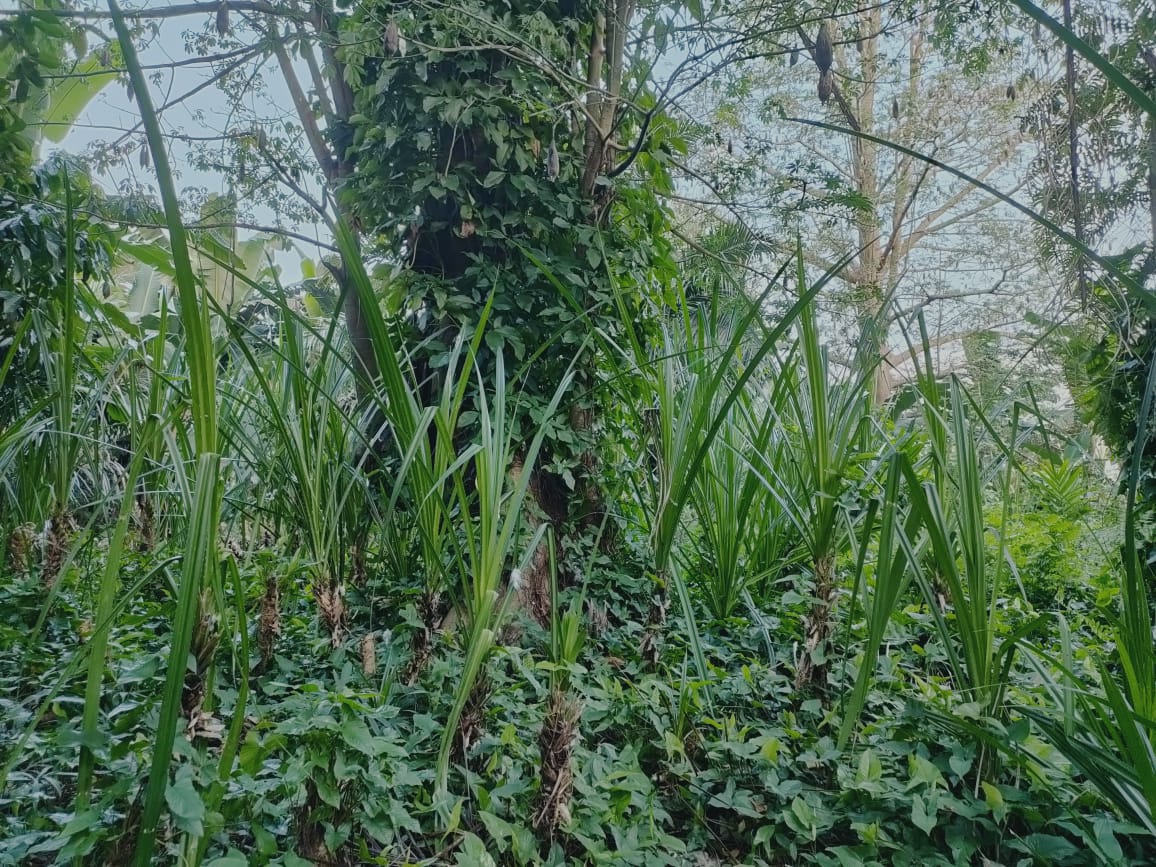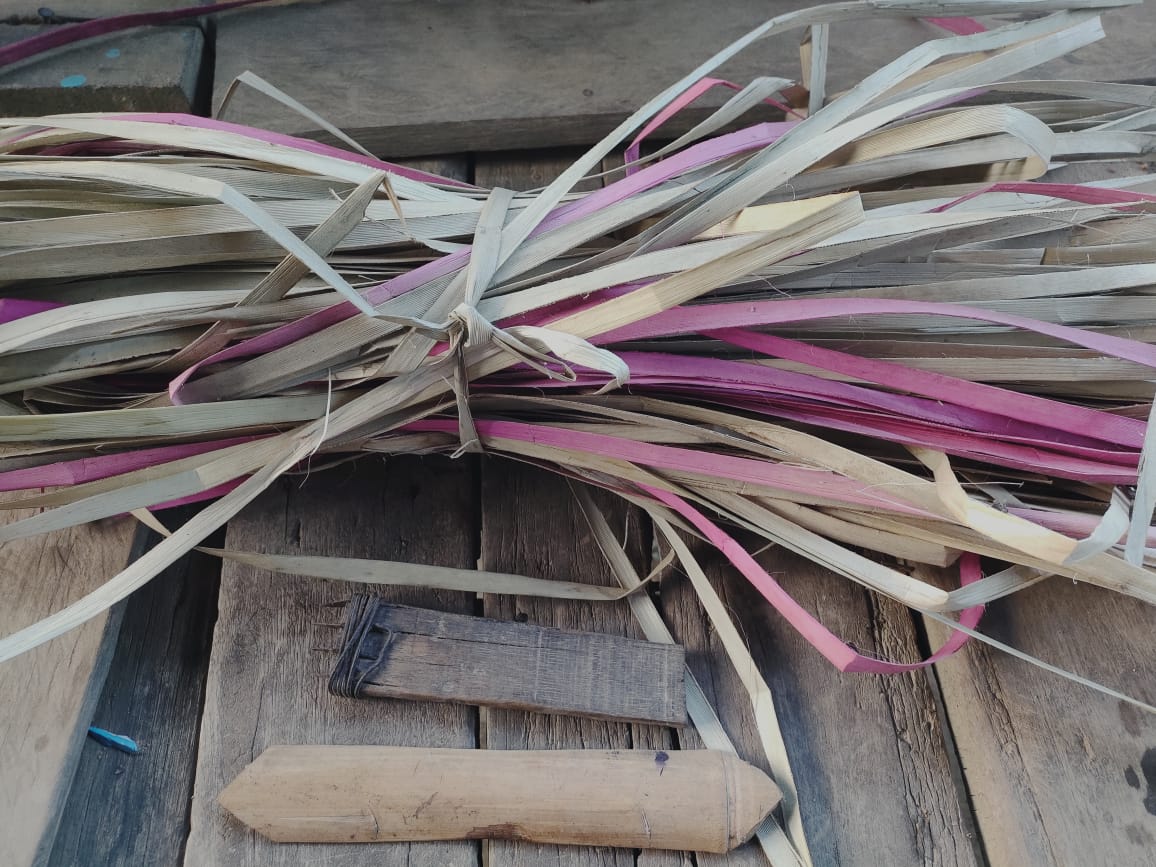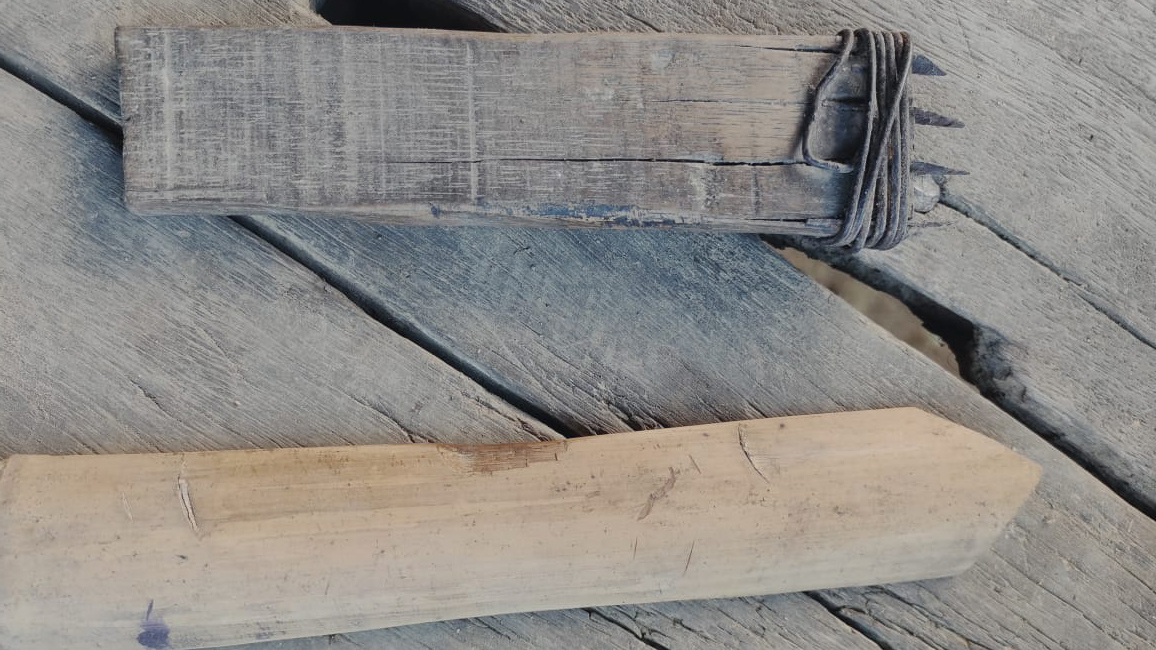Pandanus and Proboscis Monkeys
By Admin Pantau Gambut
Preserving the Mystical Power of Pandan Weaving

The thorny pandan leaves intricately crafted into mats or woven pieces are commonly utilized as a covering or mat, from the moment humans come into existence until they depart from this world. From the time an unborn child resides within a prospective mother's womb, the pandan plant has been believed to ward off malevolent forces that may harm both mother and child. Pandan is commonly encountered in the form of plants cultivated in residential yards or as household items that incorporate pandan as their primary material.
During the welcoming of a newborn, pandan woven mats are commonly used by prospective mothers as cushions during childbirth due to their soft texture and ability to provide insulation from the cold floor. As individuals grow and experience the sweetness of life, pandan mats become popular choices as seating cushions during wedding ceremonies. And as life reaches its end, it is customary for pandan mats to be used as part of the wrapping for the human body before returning it to the earth.
Unfortunately, the belief in the mystical power of pandan weaving in Kumpeh, Muaro Jambi, is diminishing. The declining number of skilled weavers can be attributed to the difficulty of imparting intricate weaving techniques to the younger generation. During our visit to the residence of Ms. Rubiyah (54) in Seponjen Village, she shared that the art of weaving has become less popular because the local community has yet to recognize pandan as a commodity with potential economic value.
“The local community doesn't perceive these pandan mats as having a good economic value, but rather as historical and traditional items. Hence, only the elderly continue to practice the weaving tradition," explained by Ms. Rubiyah, while her child poured warm tea into our glasses. The sound of a television soap opera and Javanese songs played from Ms. Rubiyah's child's mobile phone added to the lively atmosphere of our evening at her home.
"I usually weave while watching TV at night. During the day, I go to the fields," she explained.

Indeed, some members of the Seponjen community consider pandan weaving as a supplementary source of income alongside their agricultural pursuits. They have yet to be motivated to transform pandan into various popular products such as bags, sandals, or similar items. Despite having relatively adequate access to digital information, the children here are mostly engrossed in playing with their mobile phones," added Ms. Rubiyah.
Production primarily takes place at night when the elderly artisans receive orders for mats from their neighbors. Aside from the daytime agricultural activities, weaving at night proves to be more convenient for the artisans. The lower room temperature softens the pandan leaves, making them more pliable and elastic for weaving. In contrast, during the daytime, the leaves expand and tend to become stiffer, making it more challenging for the artisans to arrange them into a woven structure.
Seponjen Village lacks a continuous production system that would create a more robust supply chain for its woven commodities. This issue is particularly pronounced during the rice planting and harvesting seasons when weaving activities take a back seat to the demands of the fields. With the existing production system, the woven products have yet to promise high economic value to meet their household needs.
Artisans typically require 3 to 4 days to craft a pandan mat measuring 2.5 x 1.5 meters, with a selling price of Rp100,000. The process begins by harvesting pandan leaves intentionally grown in residential yards or abundant wild pandan plants thriving in the nearby shallow peat swamps. "Planting them is a simple task; just insert them into the ground, and they naturally propagate," explained Ms. Rubiyah. Once the appropriate-sized pandan leaves are harvested, they are carefully smoked over a fire. This smoking process typically takes a day for each mat produced.
"Not the regular pandan for cooking!" interjected Ms. Rubiyah amidst her explanation of the weaving process. The pandan variety she cultivates is the thorny pandan (Pandanus helicopus), which naturally grows in dense clusters in shallow peat swamps. The locals commonly refer to this thorny pandan as rasau or selingsing. It is characterized by its numerous branches arranged in a spiral pattern. The leaves of this variety gather at the tip, ranging in length from approximately 45 to 75 cm.
The process continues by separating the pandan into various weaving strands using a small knife called a "nyaut." The pandan is then softened using a jangko, a specialized tool made from bamboo. The artisans prepare hot water infused with dye to boil the pandan strands. Once colored, the pandan is dried in the sun and ready for weaving. Ms. Rubiyah can produce mats covering an area of 3-4 square meters in a single day of weaving. What makes it even more intriguing is that the artisans of Seponjen have developed a distinct tradition of measuring the mat's length using their own footprints.
The Fortunate Fate of Pandan
Besides pandan, the community of Seponjen also had a close relationship with several other endemic peat swamp shrubs used as weaving materials, such as purun and rumbia. These two shrubs provided alternatives to pandan due to their longer and wider leaves. This characteristic made it easier for the artisans to create larger weavings with fewer leaf connections, although their strength was not as robust as pandan.
According to Ms. Rubiyah, in the past, these three plants, pandan, purun, and rumbia, used to grow freely in the shallow peat swamps surrounding the village. However, ongoing land conversion has resulted in the continual decline of their natural habitat. The community has faced increasing difficulty in accessing the peat swamps where these shrubs once thrived. Land ownership by concessions has limited people's access. Consequently, artisans now have to travel longer distances to gather pandan, purun, or rumbia.
Pandan has a relatively more fortunate fate compared to purun and rumbia. The belief in its magical power to ward off evil forces has led to pandan being commonly found in the yards of Seponjen residents' homes. In contrast, the habitats of purun and rumbia are increasingly being encroached upon by the expansion of monoculture plantations.
Data from Peat and Mangrove Restoration Agency (BRGM) in 2017 revealed that there were at least five concessions operating in Desa Seponjen. During that year, oil palm concessions dominated a land area of 3,343 hectares out of a total of 6,474 hectares. In other words, approximately 51% of the village's land was covered by oil palm plantations, with the possibility of further expansion over time.
Oil palm plantations have been flourishing in Sepojen Village following the major forest and land fires (karhutla) in 2015. The damaged peatland ecosystem due to karhutla has led to the uncontrolled proliferation of the whitefly insect (Planococcus citri), which has become a deadly pest for cocoa plants and has severely affected the livelihoods of some residents of Sepojen Village. Crop failures and the death of cocoa trees during that period forced the villagers to switch to oil palm cultivation or seek employment as oil palm plantation workers.
The faster turnover of money from the oil palm commodity has made other commodities appear less enticing for the people of Sepojen Village. However, it is widely known through research that oil palm cultivation is not environmentally friendly, especially in peatland areas. Despite this, Ibu Rubiyah hopes that the younger generation in her village can receive training and equipment to facilitate the weaving process. With support given to the youth, the economic opportunities through pandan weaving can become more accessible and promising.
Her hope is that the people of Sepojen Village will no longer see pandan weaving solely as a cultural artifact. She wants the skill of weaving to receive more recognition as a means of earning a living and preventing the loss of land to other purposes. Moreover, the mystical power of pandan weaving will continue to be cherished by the community as a safeguard against harmful forces.






